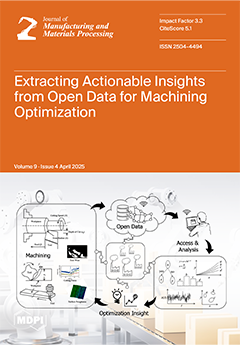Open AccessReview
Recent Trends and Future Directions in 3D Printing of Biocompatible Polymers
by
Maryam Aftab, Sania Ikram, Muneeb Ullah, Niyamat Khan, Muhammad Naeem, Muhammad Amir Khan, Rakhmonov Bakhrombek Bakhtiyor o’g’li, Kamalova Sayyorakhon Salokhiddin Qizi, Oribjonov Otabek Erkinjon Ugli, Bekkulova Mokhigul Abdurasulovna and Oribjonova Khadisakhon Abdumutallib Qizi
Cited by 12 | Viewed by 6136
Abstract
Three-dimensional (3D) bioprinting using biocompatible polymers has emerged as a revolutionary technique in tissue engineering and regenerative medicine. These biopolymers mimic the extracellular matrix (ECM) and enhance cellular behavior. The current review presents recent advancements in additive manufacturing processes including Stereolithography (SLA), Fused
[...] Read more.
Three-dimensional (3D) bioprinting using biocompatible polymers has emerged as a revolutionary technique in tissue engineering and regenerative medicine. These biopolymers mimic the extracellular matrix (ECM) and enhance cellular behavior. The current review presents recent advancements in additive manufacturing processes including Stereolithography (SLA), Fused Filament Fabrication (FFF), Selective Laser Sintering (SLS), and inkjet printing. It also explores the fundamentals of 3D printing and the properties of biocompatible polymers for 3D bioprinting. By mixing biopolymers, enhancing rheological characteristics, and adding bioactive components, further advancements have been made for organ transplantation, drug development, and tissue engineering. As research progresses, the potential for 3D bioprinting to fundamentally transform the healthcare system is becoming obvious and clear. However, the therapeutic potential of printed structures is hindered by issues such as material anisotropy, poor mechanical properties, and the need for more biocompatible and biodegradable architectures. Future research should concentrate on optimizing the 3D bioprinting process using sophisticated computational techniques, systematically examining the characteristics of biopolymers, customizing bioinks for different cell types, and exploring sustainable materials.
Full article
►▼
Show Figures





